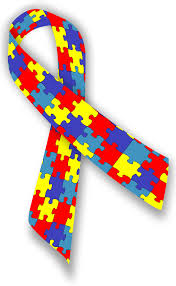Is there a dental topic more polarizing than water fluoridation? Supporters adamantly defend this public health initiative and opponents are just as resolute in their position.
On the fence about community water fluoridation? An internet search on the topic can lead to hours of reading, and information that is all over the map. Adding to public perplexity is the fact that within dental health communities you will find both supporters and opponents, even though the Canadian Dental Hygienists Association and Canadian Dental Association both have position statements supporting community water fluoridation, (1,2) as do a long list of other organizations and groups. (1)
One thing that is clear, regardless of your stance on fluoride, tooth decay rates have increased among children in Calgary since water fluoridation was discontinued in May 2011. This was brought to media attention in 2014, with Registered Dental Hygienist, Denise Kokaram speaking out about significant tooth decay being treated on the Alex Dental Health Bus,
“more than half of the children who get treated on the bus have tooth decay”, she said. “We see lower self-esteem with these kids, attention spans are affected. Loss of days at school.”(3)
At this same time, Calgary pediatric dentist Dr. Sarah Hulland said
“I’m seeing a lot more children having a lot more cavities. I’m seeing a lot of decay on 19- to 20-month babies, and this is even before they’ve got all the teeth in.
We frequently have to put them to sleep to rehabilitate them. We don’t have enough anaesthetists that actually help us to put them to sleep. We don’t have enough OR time. We don’t have enough manpower to actually do the care that needs to be given.“
What used to be a one-month wait to see a pediatric dentist in Calgary is now at least three months.” (3)
Fast forward to today, and now we have hard data thanks to a recently published study carried out in Alberta.
Lead author Lindsay McLaren, PhD, from the Cumming School of Medicine and O’Brien Institute for Public Health revealed children in Calgary are experiencing higher rates of tooth decay compared to children of the same age in Edmonton.
Comparing more than 5,000 grade two children in both cities, “there was a worsening in tooth decay in Calgary since the discontinuation of fluoridation in 2011, compared to Edmonton, where water is still fluoridated. In fact, the number of tooth surfaces with decay per child increased by 3.8 surfaces in Calgary during the time frame of the study, compared to only 2.1 in Edmonton. This is a statistically significant difference. The average child has about 20 teeth with four or five surfaces per tooth.”(4)
Dr.Mclaren says, “We first of all looked at trends over time in tooth decay in the two cities and whether there was a difference and after that we systematically went through and explored a number of possible alternative explanations for those differences. Everything pointed pretty consistently to fluoridation cessation being the main reason for the difference.”(4)
You can read the full study here htttp://www.ucalgary.ca/utoday/issue/2016-02-17/study-shows-tooth-decay-worsened-calgary-children-after-fluoride-removal (5)
At Lifetime Smiles Dental Hygiene Clinic, we provide our patients with recommendations based on their individual dental health needs, which may or may not include fluoride treatments. We respect a patient’s decision regarding treatments they consent to, and treatments they decline.
When demineralization is present, or an individual (child or adult) is a high risk for tooth decay, fluoride and re-mineralizing fluoride alternatives can be recommended. Our philosophy of care is to treat individuals on an individual basis.
Children should be seen for their first visit with a dental health care provider 6 months after their first tooth erupts, or by age 1 year. Lifetime Smiles Dental Hygiene Clinic offers to see children for this first visit at no charge. It is an important visit, despite the myth that baby teeth are NOT important. Baby teeth are VERY important. Let’s work together to ensure a future of cavity free adults, who do not require dental filling replacement over and over throughout their lives. Tooth decay is preventable. Let’s work together to prevent it.
References
- http://www.cdha.ca/CDHA/The_Profession/Resources/links/position_statement_water_fluoridation.aspx
- http://www.cda-adc.ca/en/about/position_statements/fluoride/
- http://www.cbc.ca/news/canada/calgary/dental-decay-rampant-in-calgary-children-pediatric-dentist-says-1.2864413
- http://www.ucalgary.ca/utoday/issue/2016-02-17/study-shows-tooth-decay-worsened-calgary-children-after-fluoride-removal
- http://onlinelibrary.wiley.com/journal/10.1111/%28ISSN%291600-0528
Post Author: Sally Lloyd BScDH, Registered Dental Hygienist at Lifetime Smiles Dental Hygiene Clinic , Calgary,AB



